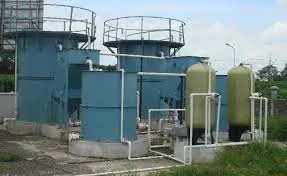Rainwater Harveting For Apartments & Homes In Bangalore
Quick Inspection Service Request
Rainwater Harvesting for Apartments and Homes
As the world grapples with water scarcity and environmental challenges, rainwater harvesting emerges as a sustainable solution to supplement water supply, reduce dependence on conventional sources, and mitigate environmental impact. In urban settings, where space is limited and water demand is high, apartments and homes can benefit significantly from rainwater harvesting systems. This comprehensive guide explores the methods, applications, benefits, and practical considerations of rainwater harvesting for apartments and homes, empowering residents to embrace sustainable water management practices.


Understanding Rainwater Harvesting
Rainwater harvesting involves collecting, storing, and utilizing rainwater for various purposes, including irrigation, domestic use, and groundwater recharge.
Collection: Rainwater is collected from rooftops, land surfaces, or other impermeable areas.
Conveyance: Gutters, downspouts, and pipes channel rainwater to storage tanks or reservoirs.
Filtration: Filtration systems remove debris, sediment, and contaminants from collected rainwater.
Storage: Rainwater is stored in tanks, cisterns, or underground reservoirs for later use.
Distribution: Pumping systems or gravity flow distribute harvested rainwater to intended applications.
Methods of Rain Water Harvesting
Rooftop Harvesting:
Collection Surfaces: Rooftops of apartments and homes serve as catchment areas for rainwater.
Gutters and Downspouts: Gutters and downspouts channel rainwater from rooftops to storage tanks or collection points.
Filtration and Storage: Screens, filters, and storage tanks remove debris and contaminants before storing rainwater for later use. b. Balcony and Terrace Harvesting:
Collection Systems: Rainwater can be collected from balcony railings, terrace floors, or dedicated collection structures.
Containers and Tanks: Storage containers or tanks placed on balconies or terraces store harvested rainwater for irrigation or other non-potable uses. c. Underground Storage:
Subsurface Tanks: Underground storage tanks or cisterns collect and store rainwater beneath apartment complexes or homes, maximizing space utilization.
Pumping Systems: Submersible pumps or lift stations convey rainwater from underground storage to distribution points for reuse.
Borewell direct recharge rainwater harvesting (RWH) is a method that involves channeling harvested rainwater directly into borewells to recharge groundwater aquifers. This approach utilizes the natural permeability of the soil and geological formations to replenish underground water sources. Borewell direct recharge RWH aims to augment groundwater levels by diverting rainwater collected from rooftops, land surfaces, or other catchment areas into borewells. Instead of storing rainwater in surface reservoirs or tanks, it is directly injected into the ground through boreholes drilled into aquifers.
Groundwater recharge rainwater harvesting (RWH) is a process that involves capturing and directing rainwater to replenish underground aquifers, thereby increasing groundwater levels. This method plays a vital role in sustainable water management, especially in regions facing water scarcity and depletion of groundwater resources. Groundwater recharge RWH focuses on augmenting natural groundwater reserves by capturing rainwater and allowing it to percolate into the ground. Instead of runoff being lost to surface water bodies or evaporation, it is directed to infiltrate into the soil and recharge aquifers, thus replenishing underground water sources.
Applications of Rain Water Harvesting
Domestic Use:
Toilet Flushing: Harvested rainwater can be used to flush toilets, reducing reliance on potable water supplies.
Laundry: Rainwater is suitable for laundry purposes, reducing water bills and conserving resources.
Outdoor Cleaning: Rainwater can be used for washing vehicles, watering plants, and cleaning outdoor spaces. b. Irrigation:
Landscape Irrigation: Rainwater is an ideal source for watering gardens, lawns, and landscaping, promoting plant growth and reducing water consumption.
Potted Plants: Rainwater can be used to water indoor and outdoor potted plants, minimizing the need for tap water. c. Non-Potable Uses:
Cooling Systems: Harvested rainwater can be used for cooling systems, such as air conditioning or evaporative cooling, in apartments and homes.
Fire Protection: Stored rainwater can serve as a backup water supply for firefighting purposes, enhancing safety and resilience. d. Emergency Preparedness:
Backup Water Supply: Stored rainwater provides a reliable backup water supply during emergencies, such as water supply disruptions or natural disasters.
Drinking Water: While not typically recommended for drinking without treatment, rainwater can be treated and filtered for emergency drinking water use if necessary.
Site Inspection
Schedule An Appointment
Benefits of Rainwater Harvesting
Water Conservation:
Reduced Water Demand: Rainwater harvesting reduces reliance on municipal water supplies, conserving valuable freshwater resources.
Sustainable Management: By utilizing rainwater for non-potable purposes, residents contribute to sustainable water management and environmental stewardship. b. Cost Savings:
Reduced Water Bills: Harvesting rainwater reduces water consumption from municipal sources, resulting in lower water bills for apartment residents and homeowners.
Operational Savings: Using rainwater for irrigation, cleaning, and other non-potable applications reduces operational expenses associated with water usage. c. Environmental Impact:
Reduced Runoff: Rainwater harvesting minimizes stormwater runoff, reducing erosion, flooding, and pollution in urban areas.
Energy Savings: Harvesting rainwater reduces energy consumption associated with water treatment, distribution, and pumping, lowering carbon emissions and environmental impact. d. Resilience and Self-Sufficiency:
Emergency Preparedness: Rainwater harvesting provides a backup water supply during emergencies, enhancing resilience and self-sufficiency for apartment residents and homeowners.
Water Security: By diversifying water sources and reducing dependence on centralized systems, rainwater harvesting enhances water security and resilience to supply disruptions.
Additional Sewage Treatment Plant Services
We Also Offer

